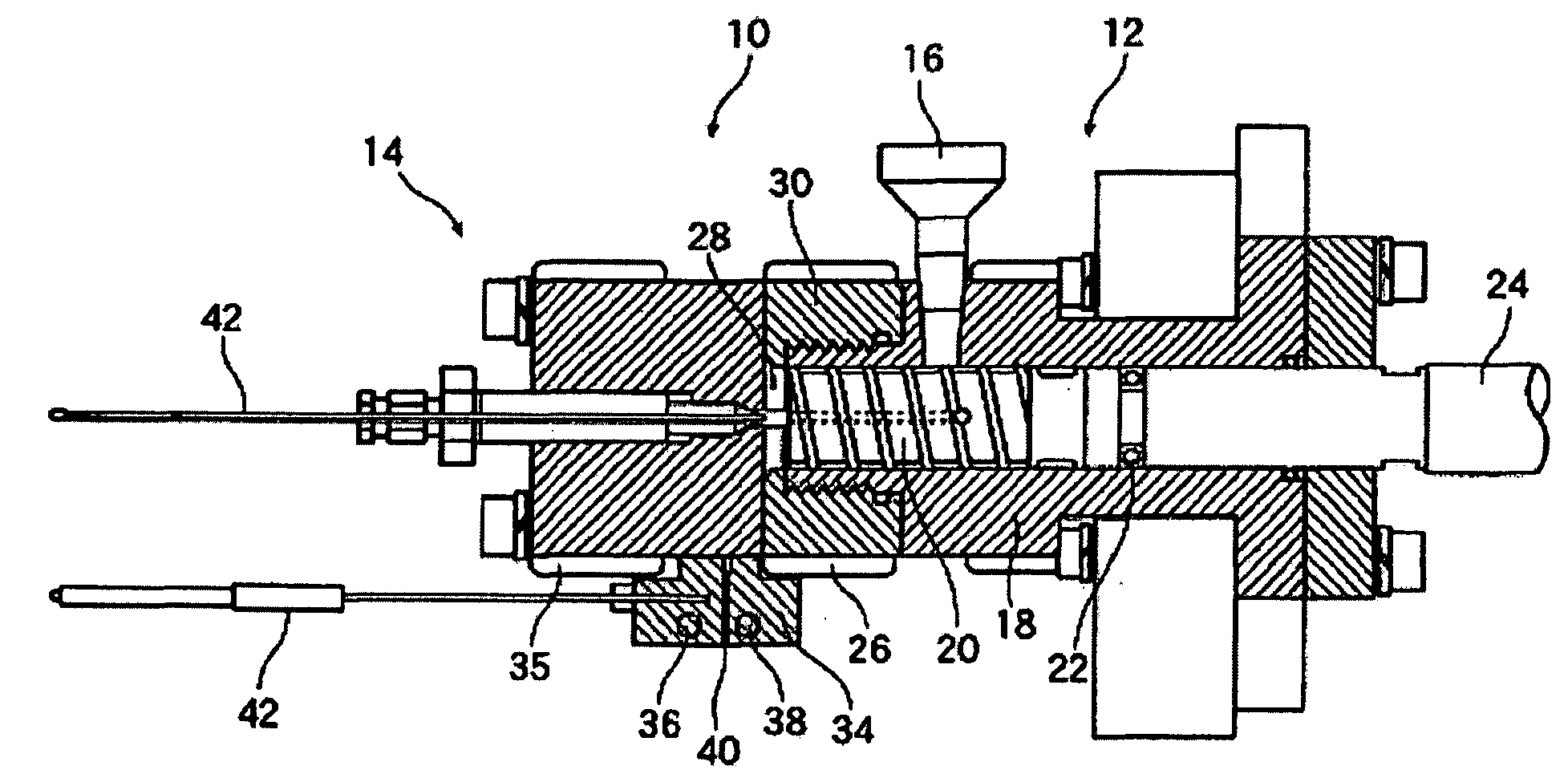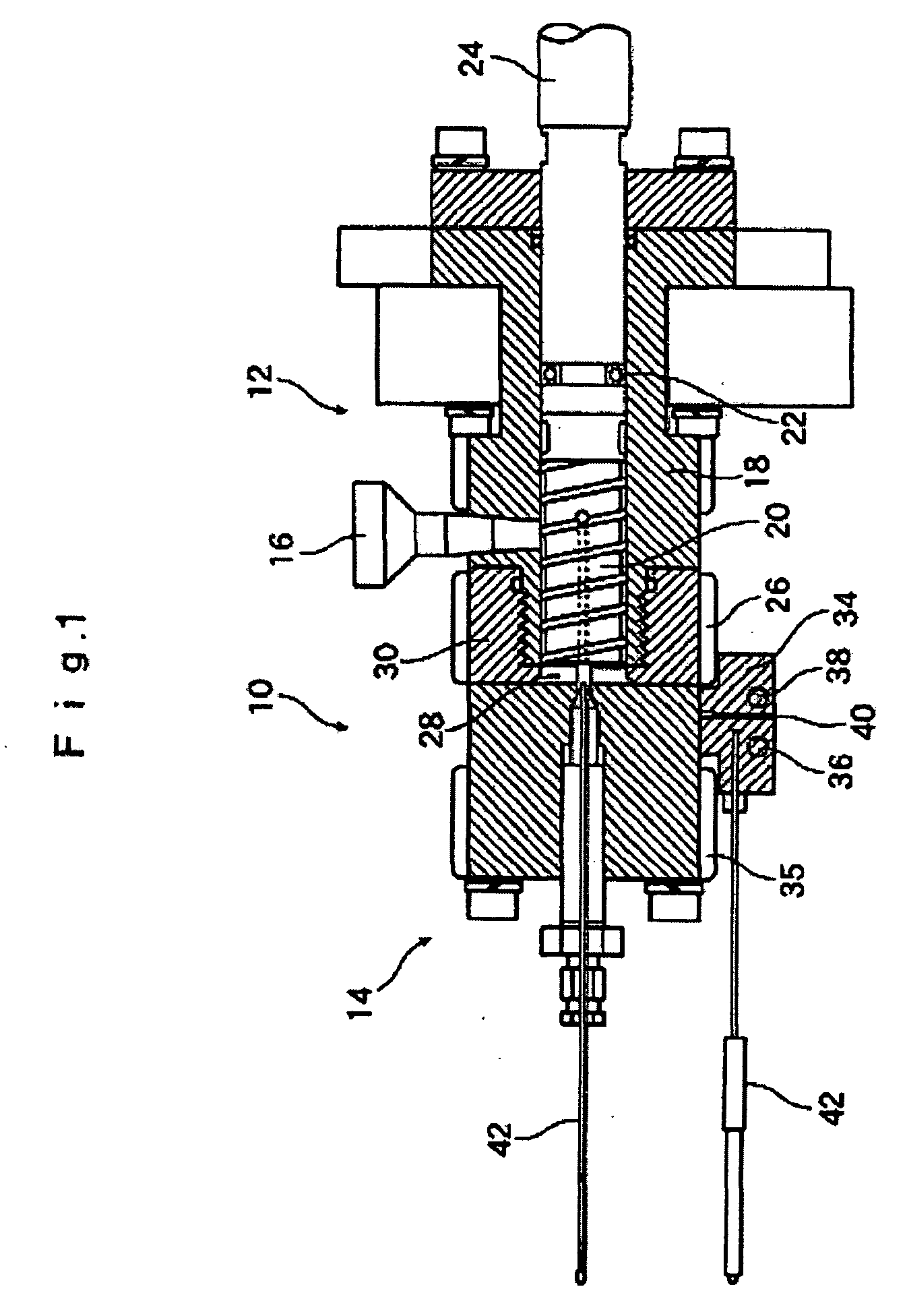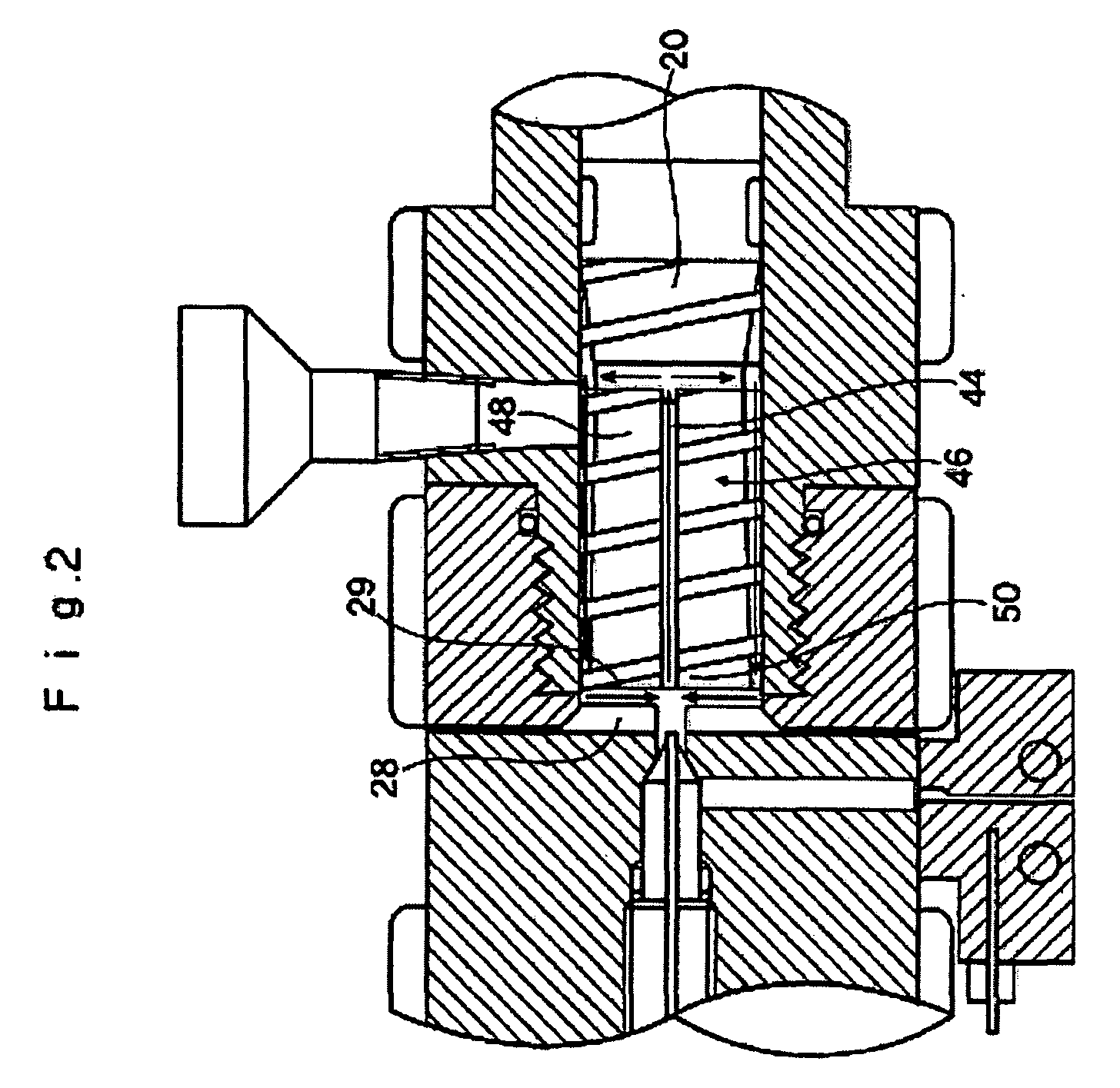Melt-kneaded products, molded resin products, and production method thereof
a technology of molded resin and elastomer, which is applied in the direction of mixing/kneading with horizontally mounted tools, applications, transportation and packaging, etc. it can solve the problems of not being able to achieve such uniform dispersion, not being able to provide satisfactory, and not being able to meet the requirements of uniform dispersion, etc., to achieve excellent elastomer properties, improve mechanical performance properties, and improve the effect of elasticity and elong
- Summary
- Abstract
- Description
- Claims
- Application Information
AI Technical Summary
Benefits of technology
Problems solved by technology
Method used
Image
Examples
example 1
[0174](1) Composite Material Comprising Elastomer and Filling Material
[0175]The following materials were used.
[0176]For the elastomer, poly(styrene-b-butadiene-co-butylene-b-styrene) (hereinafter also referred to as “SBBS”) was used. The SBBS used was a styrenelbutadienelbutadiene / styrene copolymer in a pellet form. Specifically, N503 by Asahi Kasei Corporation (Japan) with an average molecular weight (Mw) of 40000 g / mol and styrene content of 30 percent by weight was used.
[0177]For the filling material, a multi-walled carbon nanotube (MWCNT) was used.
[0178]The MWCNT used was one of 10 to 40 nm in diameter, 5 to 20 μm in length and having high purity (approx. 95%) manufactured by CNT Co., Ltd. (Korea). The multi-walled carbon nanotube was used directly.
[0179](2) Pretreatment
[0180]Before kneading, the elastomer (SBBS) and multi-walled carbon nanotube (MWCNT) were dried for at least 12 hours at 80° C. Next, 100 parts by weight of SBBS pellets and 3 parts by weight of MWCNT were introd...
example 2
[0198]Using the same apparatuses and procedures employed in Example 1, 100 parts by weight of SBBS pellets and varying contents by weight of MWCNT (varied over a range of 1.5 to 6.0%) were mixed and melt-kneaded for 4 minutes at a screw rotation speed of 2000 rpm. The obtained blends were crushed and then thermo-pressed at 200° C. to obtain sheets. The obtained blend compositions had MWCNT grains dispersed microscopically in a SBBS matrix. Also, the obtained sheets were confirmed to have a glossy surface of excellent properties.
[0199]FIG. 10 shows the stress vs. strain curves of molded resin products produced with different MWCNT contents by weight in Example 2. As evident from this figure, nano-dispersing MWCNT at the screw rotation speed of 2000 rpm still resulted in the elongation at break, being a mechanical performance property of the produced sample, decreasing along with the MWCNT content.
[0200]On the other hand, the modulus of elasticity increased in direct proportion to the...
example 3
[0205]Sample Substances
[0206]A polyvinylidene fluoride (PVDF) (KF850 by Kureha Corporation) was dried for 24 hours at 80° C. in a vacuum oven before use. A multi-walled carbon nanotube (MWCNT) by Sigma-Aldrich Corporation was used. The multi-walled carbon nanotube was produced by the carbon CVD method and had a purity of 95% or more. Its outer diameter was 10 to 20 nm and inner diameter was 5 to 10 nm. The oxidation starting temperature was 552.8° C. based on TGA measurement, and the bulk density was 2.1 g / cm3.
[0207]Conditions of Melt-Kneading Apparatus
[0208]A melt-kneading apparatus using the aforementioned recirculation feedback screw 20 was used. The L / D ratio was 1.78. The screw rotation speed was 1000 rpm and corresponding shear speed was 1470 sec−1. The space was 1 mm and the product was taken out from the T-dies.
[0209]Sample Preparation
[0210]The multi-walled carbon nanotube (MWCNT) was not chemically processed. A PVDF / MWCNT composite was produced by processing for 4 minutes a...
PUM
| Property | Measurement | Unit |
|---|---|---|
| inner diameter | aaaaa | aaaaa |
| inner diameter | aaaaa | aaaaa |
| diameter | aaaaa | aaaaa |
Abstract
Description
Claims
Application Information
 Login to View More
Login to View More - R&D
- Intellectual Property
- Life Sciences
- Materials
- Tech Scout
- Unparalleled Data Quality
- Higher Quality Content
- 60% Fewer Hallucinations
Browse by: Latest US Patents, China's latest patents, Technical Efficacy Thesaurus, Application Domain, Technology Topic, Popular Technical Reports.
© 2025 PatSnap. All rights reserved.Legal|Privacy policy|Modern Slavery Act Transparency Statement|Sitemap|About US| Contact US: help@patsnap.com



